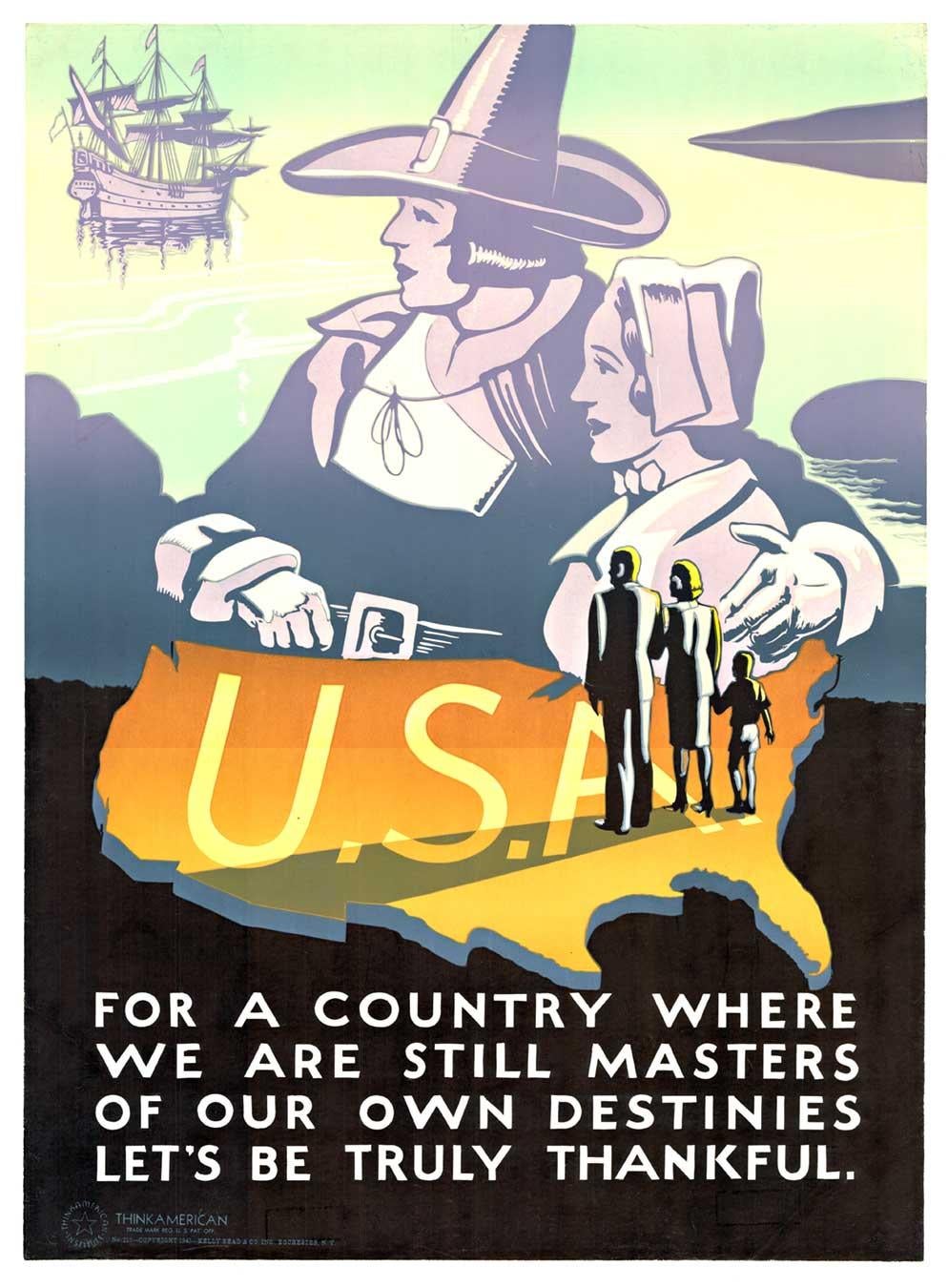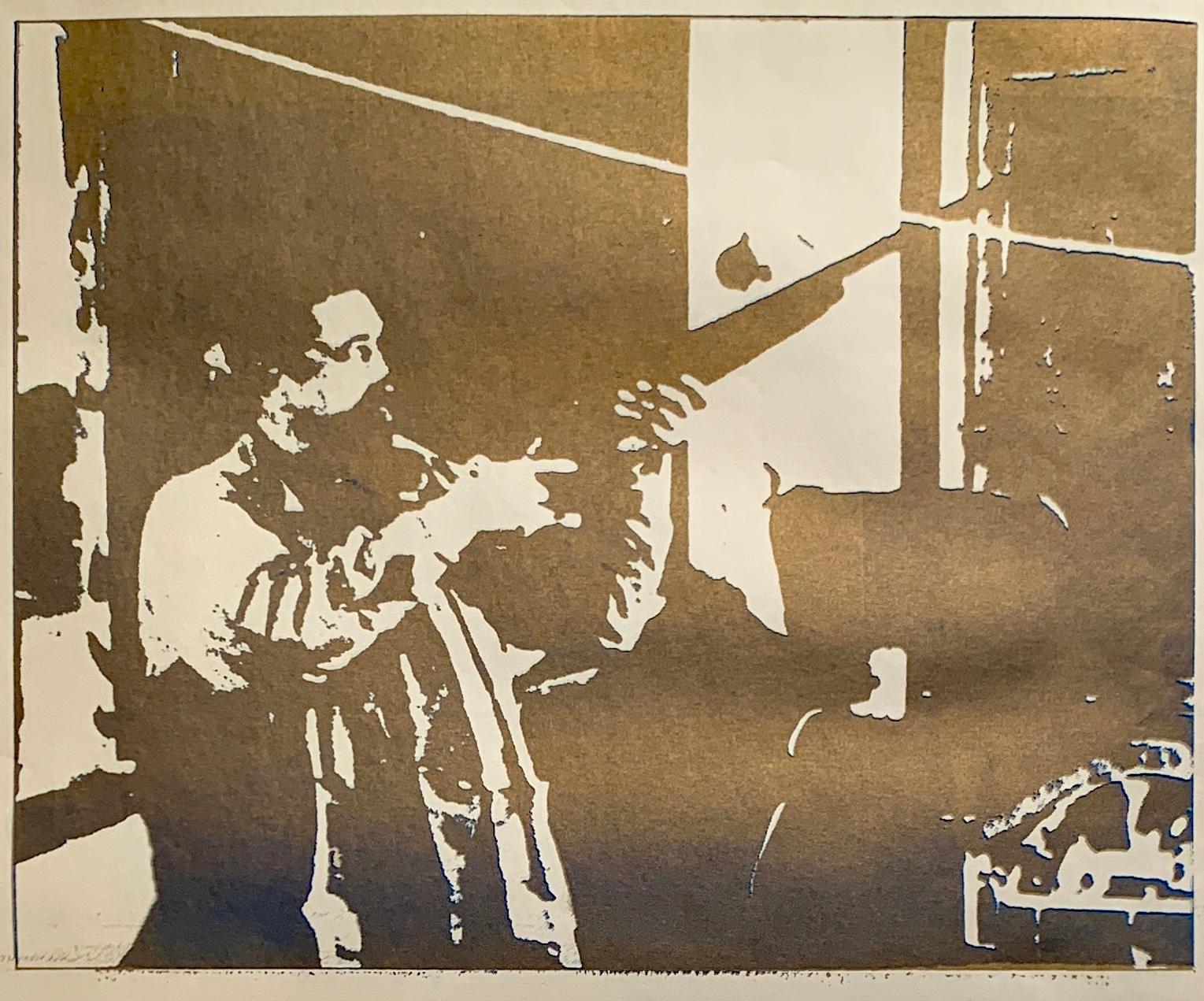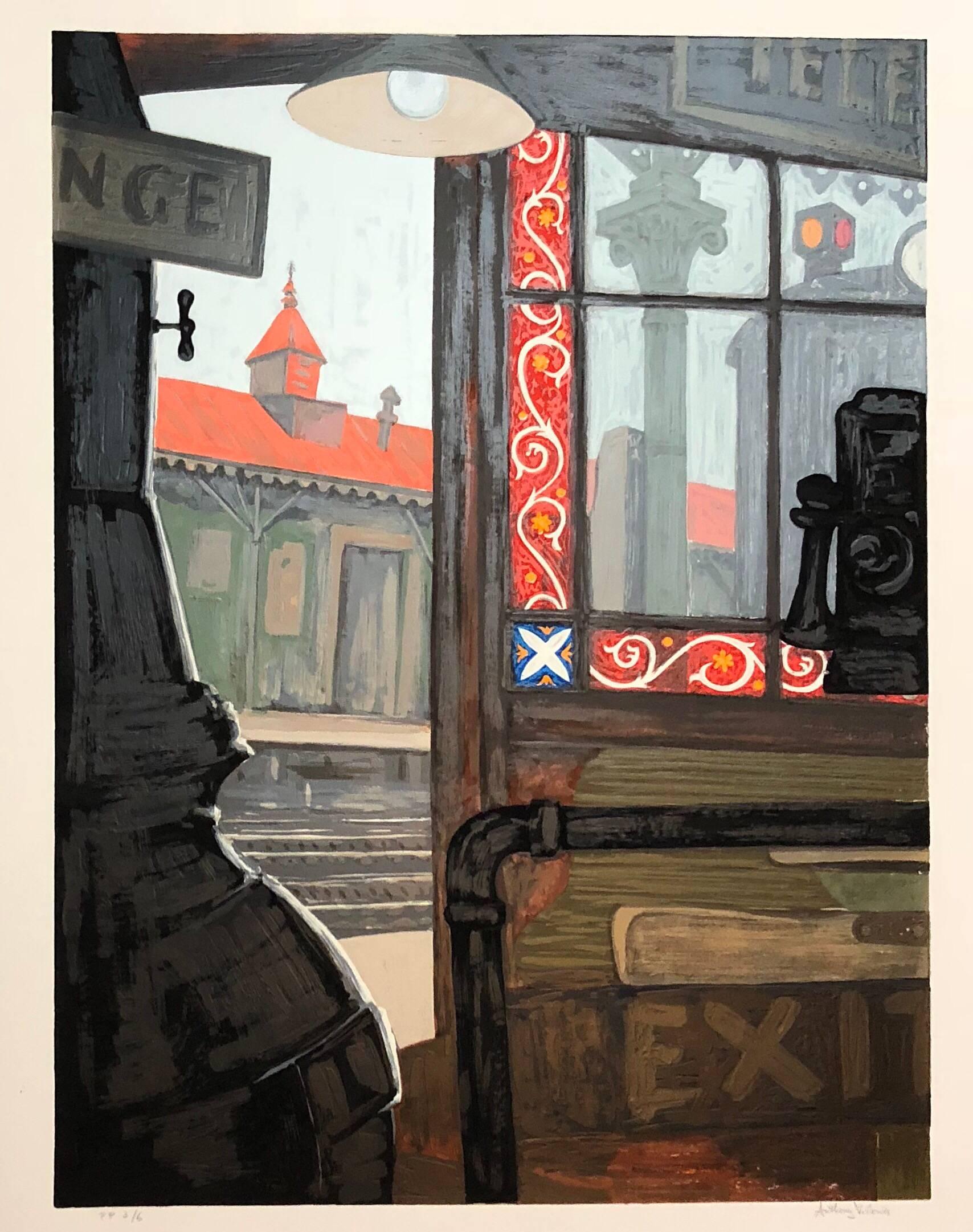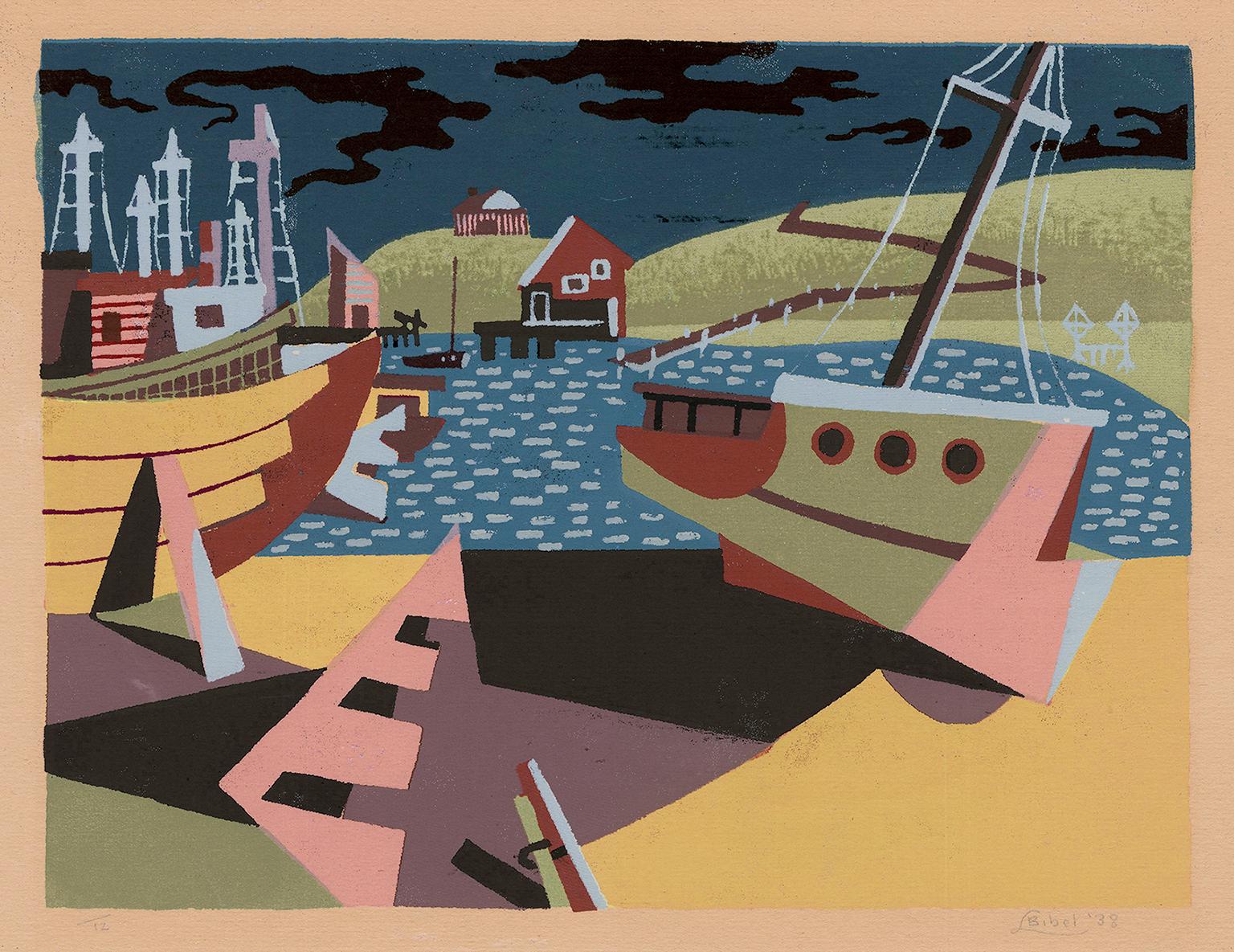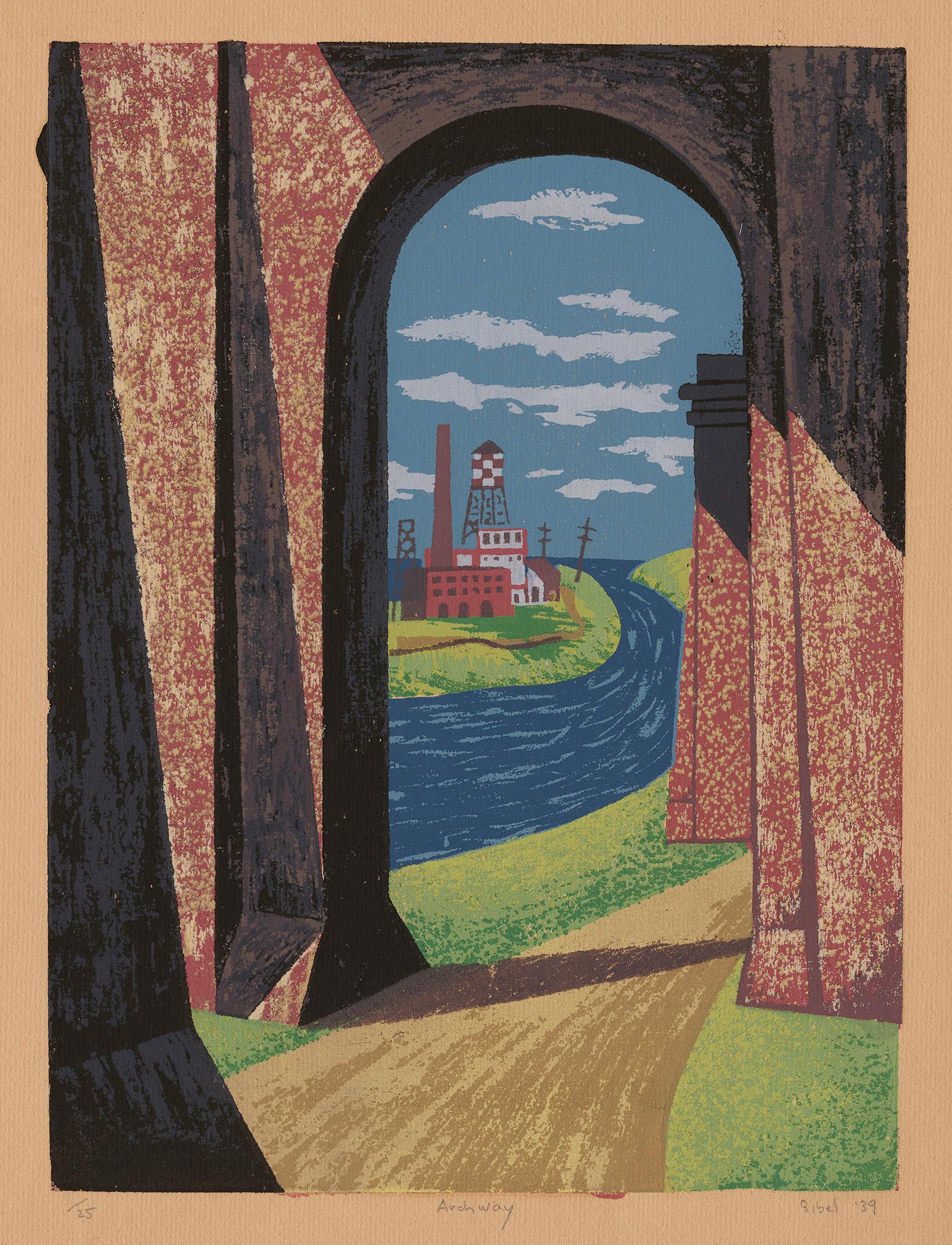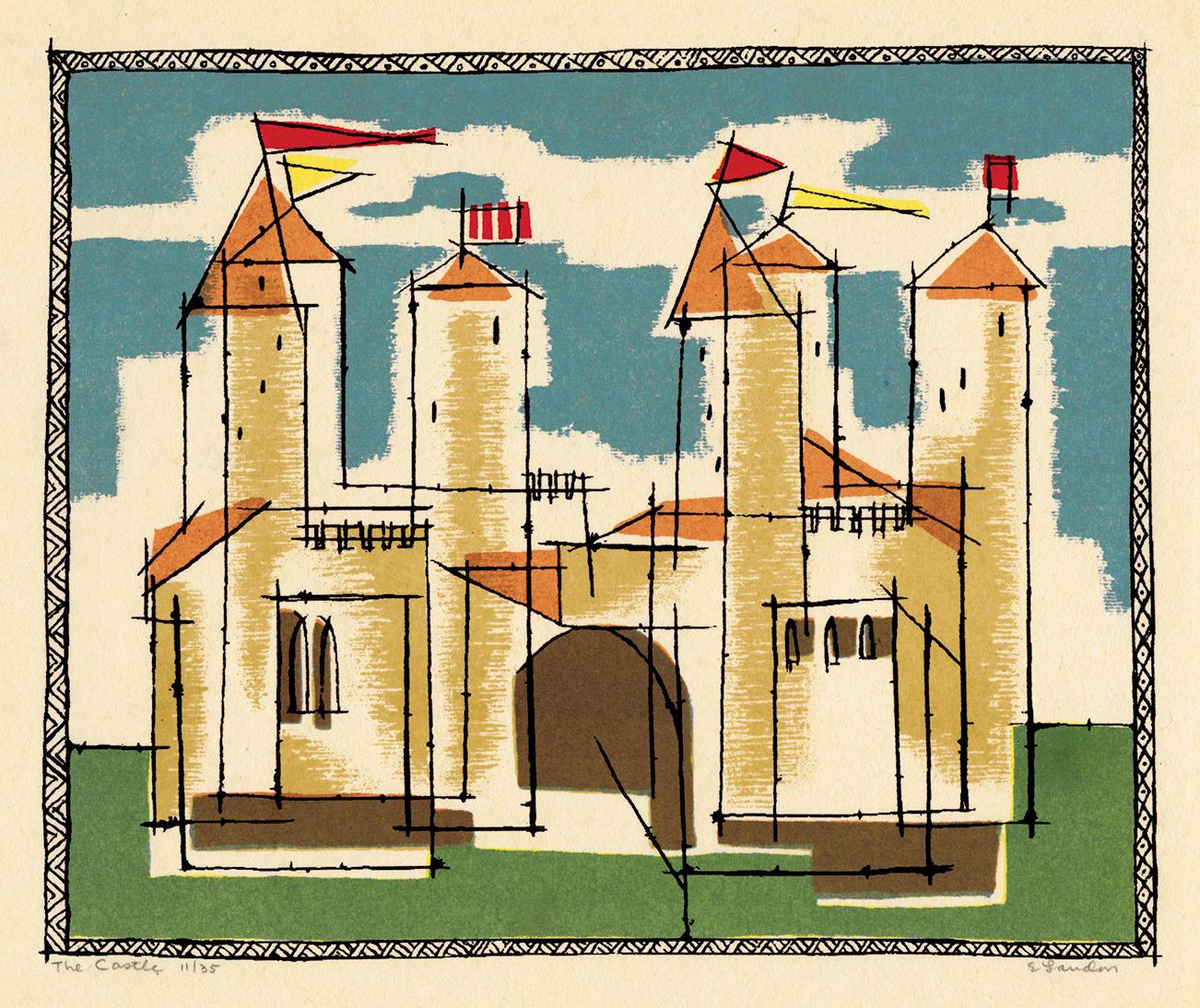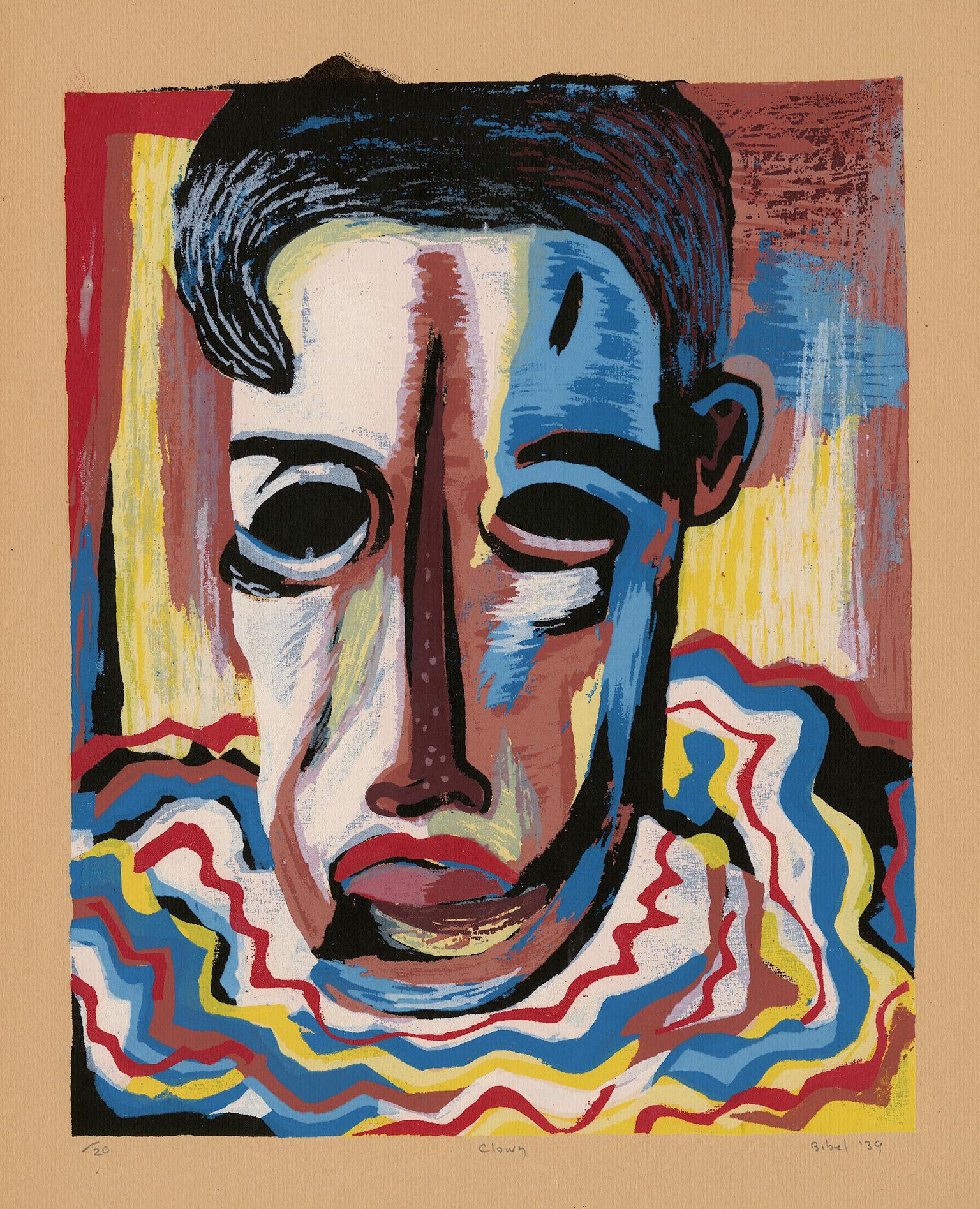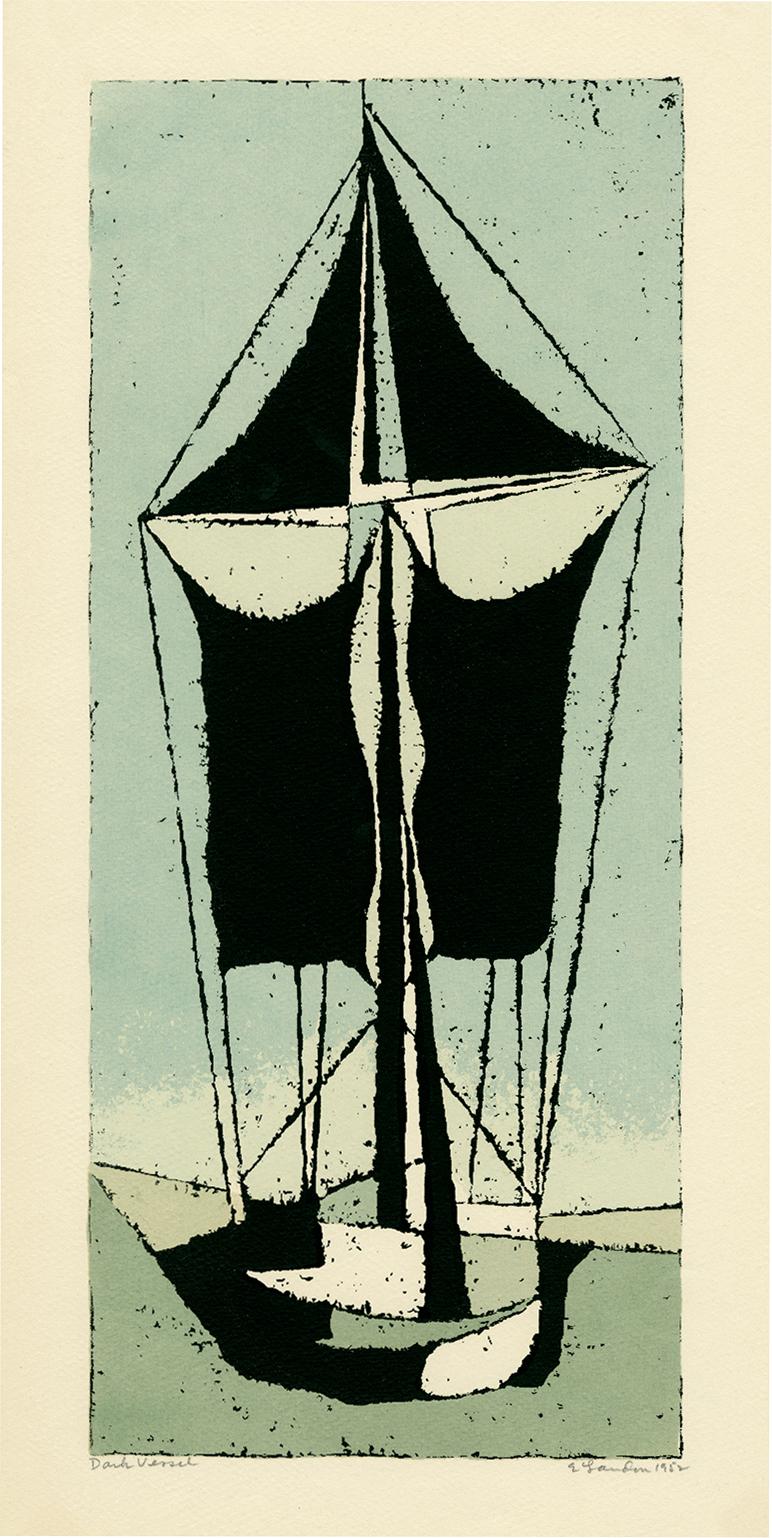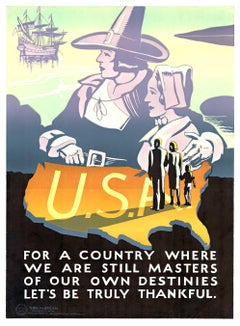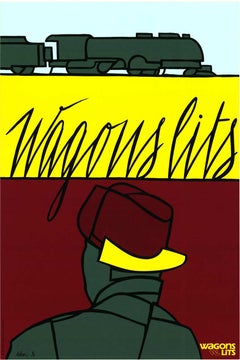Haiti - Original Handsigned Screen Print
View Similar Items
Want more images or videos?
Request additional images or videos from the seller
1 of 8
Shepard FaireyHaiti - Original Handsigned Screen Print2010
2010
About the Item
- Creator:Shepard Fairey (1970, American)
- Creation Year:2010
- Dimensions:Height: 24.02 in (61 cm)Width: 17.92 in (45.5 cm)
- Medium:
- Movement & Style:
- Period:
- Condition:
- Gallery Location:Paris, FR
- Reference Number:1stDibs: LU46434019081
About the Seller
4.9
Platinum Seller
These expertly vetted sellers are 1stDibs' most experienced sellers and are rated highest by our customers.
Established in 2010
1stDibs seller since 2016
3,254 sales on 1stDibs
Typical response time: 1 hour
More From This SellerView All
- Ratfinkbonerthunk : Surrealist Rat - Original Giclee Print, HandsignedBy Kenny ScharfLocated in Paris, FRKenny Scharf Ratfinkbonerthunk : Surrealist Rat, 1990 Original Giclee Print Handsigned in pencil On Arches vellum 56 x 76 cm (c. 22 x 30 in) Published by Editions Vermorel in 1990 ...Category
1990s American Modern Figurative Prints
MaterialsGiclée, Screen
- Tommy Ramone Collage (Gold) - Original Handsigned Screen PrintBy Shepard FaireyLocated in Paris, FRShepard FAIREY Ramone Collage (Gold) Original screen print (serigraphy) Handsigned in pencil Numbered /350 copies On cream paper 61 x 46 cm (c. 24 x 18 inch) Excellent conditionCategory
2010s American Modern Figurative Prints
MaterialsScreen
- Ecology : Protect the Planet (Earth Crisis) - Tall screenprint signed & numberedBy Shepard FaireyLocated in Paris, FRShepard FAIREY (Obey Giant) Flowering Eiffel Tower (A Delicate Balance) Original sceen print Handsigned in pencil Authenticated with blind stamp on the artist A rare AP (Artist proo...Category
2010s American Modern Figurative Prints
MaterialsScreen
- Swimmer - Screenprint (Olympic Games Munich 1972)By Ronald Brooks KitajLocated in Paris, FRRonard Brooks KITAJ Swimmer Screen print Signature printed in the plate On heavy paper 101 x 64 cm (c. 40 x 26 inch) Made for the Olympic Games in Munich, 1972 Excellent conditionCategory
1970s American Modern Figurative Prints
MaterialsScreen
- Headstand (San Francisco Museum of Modern Art) - Exhibition PosterBy Keith HaringLocated in Paris, FRKeith Haring Headstand Original vintage exhibition Poster printed in Screenprint On thick paper 90 x 60 cm (c. 36 x 24 in) INFORMATION: Official screenprint poster for the Haring e...Category
1980s American Modern Figurative Prints
MaterialsScreen
- Dia de los Muertos / Day of the Dead - Original Handsigned Letterpress setBy Shepard FaireyLocated in Paris, FRShepard FAIREY (OBEY) and Ernesto YERENA (Ganas) Dia de los Muertos / Day of the Dead Two Original letterpress set (serigraphy) Handsigned in pencil Numbered /250 copies On black ve...Category
2010s American Modern Figurative Prints
MaterialsScreen
You May Also Like
- Original "Think American" USA World War II vintage posterLocated in Spokane, WAOriginal poster: For a Country Where We Are Still Masters of Our Own Destinies, Let's Be Truly Thankful. Silk-screened patriotism. This is a poster meant to appeal to the American f...Category
1940s American Modern Figurative Prints
MaterialsScreen
- Original "Wagon Lits" pop art style serigraph travel by train posterBy Valerio AdamiLocated in Spokane, WAOriginal “Wagon Lits” serigraph poster by the artist Valerio Adami. It was printed in France by GrafiCaza (Michel Caza), one of the finest serigraph companies on woven paper—in exce...Category
1990s American Modern Figurative Prints
MaterialsScreen
- "Gold and Blue Gun" 1970s Original Portrait SilkscreenLocated in Arp, TXArtist unknown "Gold and Blue Gun" c. 1970s Silkscreen on paper Image size 21.25"x17" paper size 26"x40" unframed $350 Unsigned *Listed price reflects custom framing selected by sell...Category
1970s American Modern Figurative Prints
MaterialsPaper, Screen
- Modernist Figurative Pop Art Etching and Aquatint "the Artist" Michael MazurBy Michael MazurLocated in Surfside, FLMichael Mazur "The Artist" Hand signed and editioned from the edition of 50 1967 Michael Burton Mazur (1935-August 18, 2009) was an American artist who was described by William Grimes of The New York Times as "a restlessly inventive printmaker, painter, and sculptor." Born and raised in New York City, Mazur attended the Horace Mann School. He received a bachelor's degree from Amherst College in 1958, then studied art at Yale. Mazur first gained notice for his series of lithographs and etchings of inmates in a mental asylum, which resulted in two publications, "Closed Ward" and "Locked Ward." Over the years, he worked in printmaking and painting. His series of large-scale prints for Dante's Inferno won critical acclaim, and were the subject of a traveling exhibition organized by the University of Iowa in 1994. Later he concentrated on creating large, lyrical paintings which make use of his free, gestural brushwork and a varied palette. Some of these paintings were seen in an exhibition of 2002 at Boston University, "Looking East: Brice Marden, Michael Mazur, and Pat Steir." (See also Susan Danly, "Branching: The Art of Michael Mazur," 1997). The Museum of Fine Arts, Boston, has acquired a definMichael Mazur received a B.A. from Amherst College in 1957, studying in his senior year at the Accademia di Belle Arti in Florence, Italy. He went on to earn both a B.F.A. and an M.F.A. from the Yale School of Art and Architecture in 1961. Mazur's first teaching job was at the Rhode Island School of Design from 1961 to 1964. He was awarded a Guggenheim Foundation fellowship for 1964–65. From 1965 to 1976, he taught at Brandeis University, and from 1976 to 1978 at Harvard University. As an artist, teacher, and writer, Mazur has been active in reviving the monotype process. He contributed an essay to the pioneering exhibition catalogue The Painterly Print, published by the Metropolitan Museum of Art in 1980. Mazur recently chaired the New Provincetown Print...Category
Early 2000s American Modern Abstract Prints
MaterialsLithograph, Screen
- Modernist Silkscreen Screenprint 'El Station, Interior' NYC Subway, WPA ArtistBy Anthony VelonisLocated in Surfside, FLscreenprint printed in color ink on wove paper. New York City subway station interior. Anthony Velonis (1911 – 1997) was an American painter and designer born in New York City who helped introduce the public to silkscreen printing in the early 20th century. While employed under the federal Works Progress Administration, WPA during the Great Depression, Velonis brought the use of silkscreen printing as a fine art form, referred to as the "serigraph," into the mainstream. By his own request, he was not publicly credited for coining the term. He experimented and mastered techniques to print on a wide variety of materials, such as glass, plastics, and metal, thereby expanding the field. In the mid to late 20th century, the silkscreen technique became popular among other artists such as Robert Rauschenberg and Andy Warhol. Velonis was born into a relatively poor background of a Greek immigrant family and grew up in the tenements of New York City. Early on, he took creative inspiration from figures in his life such as his grandfather, an immigrant from the mountains in Greece, who was "an ecclesiastical painter, on Byzantine style." Velonis attended James Monroe High School in The Bronx, where he took on minor artistic roles such as the illustration of his high school yearbook. He eventually received a scholarship to the NYU College of Fine Arts, into which he was both surprised and ecstatic to have been admitted. Around this time he took to painting, watercolor, and sculpture, as well as various other art forms, hoping to find a niche that fit. He attended NYU until 1929, when the Great Depression started in the United States after the stock market crash. Around the year 1932, Velonis became interested in silk screen, together with fellow artist Fritz Brosius, and decided to investigate the practice. Working in his brother's sign shop, Velonis was able to master the silkscreen process. He reminisced in an interview three decades later that doing so was "plenty of fun," and that a lot of technology can be discovered through hard work, more so if it is worked on "little by little." Velonis was hired by Mayor LaGuardia in 1934 to promote the work of New York's city government via posters publicizing city projects. One such project required him to go on a commercial fishing trip to locations including New Bedford and Nantucket for a fortnight, where he primarily took photographs and notes, and made sketches. Afterward, for a period of roughly six months, he was occupied with creating paintings from these records. During this trip, Velonis developed true respect and affinity for the fishermen with whom he traveled, "the relatively uneducated person," in his words. Following this, Velonis began work with the Public Works of Art Project (PWAP), an offshoot of the Civil Works Administration (CWA), where he was assigned to serve the different city departments of New York. After the formation of the federal Works Progress Administration, which hired artists and sponsored projects in the arts, he also worked in theater. Velonis began working for the federal WPA in 1935. He kept this position until 1936 or 1938, at which point he began working in the graphic art division of the Federal Art Project, which he ultimately led. Under various elements of the WPA program, many young artists, writers and actors gained employment that helped them survive during the Depression, as well as contributing works that created an artistic legacy for the country. When interviewed in December 1994 by the Library of Congress about his time in the WPA, Velonis reflected that he had greatly enjoyed that period, saying that he liked the "excitement" and "meeting all the other artists with different points of view." He also said in a later interview that "the contact and the dialogue with all those artists and the work that took place was just invaluable." Among the young artists he hired was Edmond Casarella, who later developed an innovative technique using layered cardboard for woodcuts. Velonis introduced silkscreen printing to the Poster Division of the WPA. As he recalled in a 1965 interview: "I suggested that the Poster division would be a lot more productive and useful if they had an auxiliary screen printing project that worked along with them. And apparently this was very favorably received..." As a member of the Federal Art Project, a subdivision of the WPA, Velonis later approached the Public Use of Arts Committee (PUAC) for help in "propagandizing for art in the parks, in the subways, et cetera." Since the Federal Art Project could not be "self-promoting," an outside organization was required to advertise their art more extensively. During his employment with the Federal Art Project, Velonis created nine silkscreen posters for the federal government. Around 1937-1939 Velonis wrote a pamphlet titled "Technical Problems of the Artist: Technique of the Silkscreen Process," which was distributed to art centers run by the WPA around the country. It was considered very influential in encouraging artists to try this relatively inexpensive technique and stimulated printmaking across the country. In 1939, Velonis founded the Creative Printmakers Group, along with three others, including Hyman Warsager. They printed both their own works and those of other artists in their facility. This was considered the most important silkscreen shop of the period. The next year, Velonis founded the National Serigraph Society. It started out with relatively small commercial projects, such as "rather fancy" Christmas cards that were sold to many of the upscale Fifth Avenue shops...Category
1980s American Modern Figurative Prints
MaterialsScreen
- 1970s Pop Art "Dancing Lessons #2" Green, Pink Silkscreen Mod Ballet Girl PrintBy Joanne SeltzerLocated in Surfside, FLthere is a companion piece on a silver paper. A depiction of a ballet dancer, superimposed upon canceled dance class checks. Joanne Seltzer was born in Philadelphia, Pennsylvania a...Category
1970s American Modern Abstract Prints
MaterialsScreen
Recently Viewed
View AllMore Ways To Browse
Vintage African American Women
Picasso Lithograph 1954
Marc Chagall Original Painting
Mid Century Modern Abstract Head
Basquiat Record Art
Israel Travel
Monumental Etching
English Painting 1930s
Green And Yellow Abstract Glass
Revolutionary War Paintings
Warhol Album Covers
Andy Warhol Record Cover Art
Cat Child
Chagall Pencil Signed
Rainbow Pop Art
Vintage Theater Stage
Ballerina Sculpture
After Velasquez
